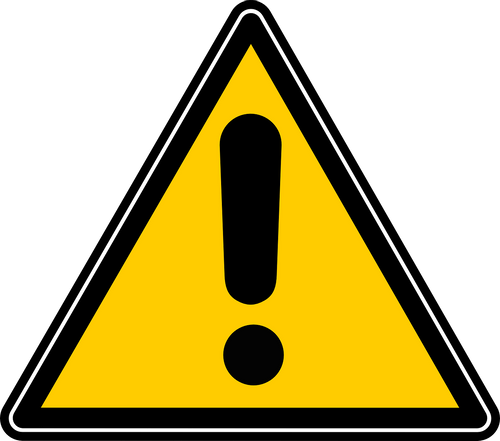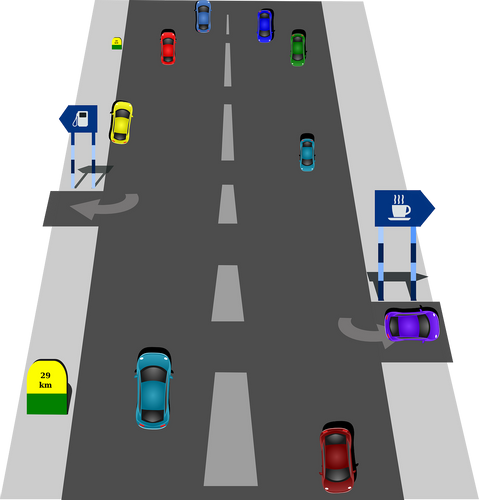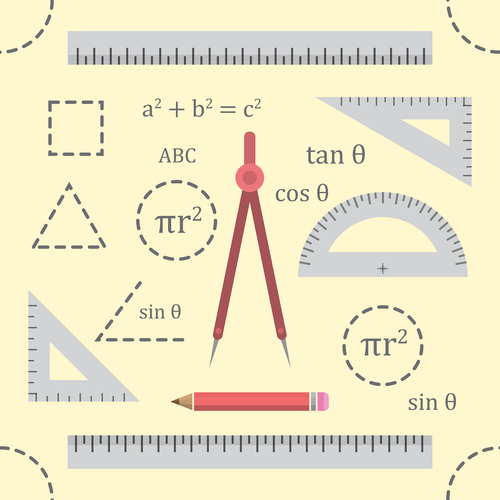Standards Packages
iTeh together with SIST has developed and compiled a comprehensive collection of standard packages to support your standard requirements. Our packages cover an array of content that includes quality management, risk management, road vehicles, machine safety, and much more. With over 200 packages to choose from, you are sure to find a collection to suit your standard needs.
Latest Standards
This document specifies the minimum design and performance requirements for helmets as part of personal protective equipment (PPE) to be used by firefighters, primarily but not solely to protect against impact and exposure to flame and high thermal loads.
- Standard25 pagesEnglish languagesale 15% off
This document provides a description of the primary services that have been internationally defined to promote consistency among implementations. Implementations can provide any of these services in combination with any other services that are appropriate. This document organizes ITS services by defining service groups, which are placed into one of several service domains. Each service group contains one or more individual services, each of which is described. This document is intended for use by at least two groups of people involved in the ITS sector: a) those who are looking for ideas about the services that ITS implementations can provide, and b) those who are developing International Standards. For the first group, this document provides service descriptions that can act as the catalyst for more detailed descriptions. The level of detail can differ from one ITS implementation to another, depending on whether or not a national ITS architecture is involved, and whether or not this architecture is based directly on services, or on groups of functions. The service descriptions in this document are pitched at a high-level as too much detail can be prescriptive and reduces flexibility. For standards developers, this document is applicable to Technical Committees who are developing International Standards for the ITS sector. This document is designed to provide information and explanations of services that can form the basis and reason for developing standards. Due to its nature, this document is largely advisory and informative with minimal requirements. It is designed to assist the integration of services into a cohesive reference architecture, thereby promoting interoperability and the use of common data definitions. Specifically, services defined within the service groups can be the basis for defining “use cases”, “user needs” or "user service requirements” depending on the methodology being used to develop the resultant ITS architecture functionality. They can also assist with defining applicable data within data dictionaries, and applicable communications and data exchange standards.
- Standard121 pagesEnglish languagesale 15% off
This document describes procedures for the determination of non-rare earth impurities in individual rare earth metals and their oxides through the use of inductively coupled plasma atomic emission spectroscopy (ICP-AES). Magnesium (Mg), aluminum (Al), silicon (Si), calcium (Ca) and iron (Fe) are included as non-rare earth impurity elements, and the measurement ranges for each impurity element are specified. The applicable measurement range (mass fraction %) of magnesium, aluminum, silicon and calcium is from 0,001 to 0,2, and that of iron is from 0,001 to 0,5. The verified measurement ranges in the interlaboratory tests are described later in this document.
- Standard11 pagesEnglish languagesale 15% off
This document describes a method of producing a compaction curve indicating the rammability of carbonaceous ramming pastes used to line cathodes utilized in the production of aluminium. Determination of the rammability enables a ramming paste with the optimum density to be selected.
- Standard6 pagesEnglish languagesale 15% off
This document describes the preparation of unbaked test specimens made by compacting carbonaceous ramming pastes. This document also includes a method for determination of the apparent density after compaction. Unbaked test specimens of ramming paste are not only prepared for determination of the apparent density of the paste after compaction, but also for the determination of the dimensional change during baking and for the subsequent determination of properties of baked test specimens.
- Standard4 pagesEnglish languagesale 15% off
This document specifies two methods for the determination of the resistance of rubber to abrasion by means of a rotating cylindrical drum device. The methods involve determination of the volume loss due to the abrasive action of rubbing a test piece over a specified grade of abrasive sheet. Method A is for a non-rotating test piece and method B is for a rotating test piece. For each method, the result can be reported as a relative volume loss or an abrasion resistance index. These test methods are suitable for comparative testing, quality control, specification compliance testing, referee purposes and research and development work. No close relation between the results of this abrasion test and service performance can be inferred. NOTE The abrasion loss is often more uniform using the rotating test piece because the whole surface of the test piece is in contact with the abrasive sheet over the duration of the test. However, there is considerable experience using the non-rotating test piece.
- Standard19 pagesEnglish languagesale 15% off
IEC 62788-7-3:2022 defines the test methods that can be used for evaluating the abrasion of materials and coatings in photovoltaic modules or other solar devices. This document may be applied to components on the incident surface (including coatings, frontsheet, and glass) as well as the back surface (including backsheets or back glass). This document is intended to address abrasion of PV module surfaces and any coatings present using representative specimens (e.g. which can be centimetres in size); the methods and apparatus used here can also be used on PV module specimens (e.g. meters in size).
- Standard44 pagesEnglish languagesale 15% off
- Standard43 pagesEnglish and French languagesale 15% off
- Standard9 pagesEnglish and French languagesale 15% off
This document provides guidance to governing bodies on how to approach the development and use of indicators in their governing activities. This document is primarily written for use by governing bodies, it is also written to be of relevance to a range of other stakeholders inside and outside of the organization to help them improve the quality of the information on which they assess and make decisions regarding the organization’s governance. It is applicable to all organizations regardless of type, size, location, structure or purpose. This document does not cover indicators of effective governance.
- Standard18 pagesEnglish languagesale 15% off
- Draft22 pagesEnglish languagesale 10% offe-Library read for1 day
This document specifies principles for the design of agricultural machinery and tractors utilizing systems (perception, supervisory or other) to prevent unintended excursions beyond the boundary of the autonomous operating zone which are used in agricultural applications and that have partially automated, semi-autonomous and autonomous functions. Additionally, it provides guidance on the type of information to be provided by the manufacturer on safe working practices (including information about residual risks). The autonomous operating zone itself is not within the scope of this document. The autonomous operating zone can include, for example, considerations for the autonomous operating zone location, physical or virtual boundaries, physical boundary types (natural or man-made) and the associated risks with the systems (perception, supervisory or other) to prevent unintended excursions beyond the boundary of the autonomous operating zone design. The purpose of this document is to assist in the provision of more specific safety requirements, means of verification and information for use to ensure an appropriate level of safety for agricultural machinery and tractors with partially automated, semi-autonomous and autonomous functions used in a specified way. This document deals with the significant hazards relevant to agricultural machinery and tractors with partially automated, semi-autonomous and autonomous functions when used as intended and under the conditions of misuse reasonably foreseeable by the manufacturer during normal operation and service. Applicability of the design principles and any additional detailed requirements for design, verification, validation or information for use are outside the scope of this document. When risk assessment concludes that hazards are not significant hazards, the principles of this document do not apply. NOTE Safety requirements for specific non-automated functions of agricultural machinery and tractors can be available in machine-specific type-C standards. This document is not applicable to: — forestry applications; — operations on public roads including relevant requirements for braking and steering systems. This document is not applicable to agricultural machinery and tractors which are manufactured before the date of its publication, or to systems applied to agricultural machinery and tractors put into use before the date of its publication.
- Standard9 pagesEnglish languagesale 15% off
- Standard9 pagesFrench languagesale 15% off
This document specifies a method for the generation of tyre and road wear particles (TRWP) in a road simulator laboratory that is representative of actual driving conditions. Guidance is provided for the road simulator system, test pavement and tyres, vacuum collection system, monitoring and reporting. This method is applicable for the collection of TRWP from a known pavement and tyre type under realistic driving conditions without the inference of road surface contaminants (e.g. brake dust, exhaust, grease). There is a possibility that this method is not relevant for studded tyres.
- Standard7 pagesEnglish languagesale 15% off
- Standard8 pagesFrench languagesale 15% off
- Standard4 pagesEnglish and French languagesale 15% off
This document specifies the performance requirements for sterile, single-use non-active hydrocephalus shunts. This includes not only the valve, but also additional components such as tubes and reservoirs. This document does not provide any recommendations on which type of valve is most suitable for any specific context of use. This document specifies the mechanical and technical requirements to manufacture shunts and the technical information of the valve to be supplied by the manufacturer. This document does not apply to active implants for the treatment of hydrocephalus.
- Standard7 pagesEnglish languagesale 15% off
- Standard7 pagesFrench languagesale 15% off
IEC 62463:2024 is applicable to security screening systems designed to expose persons to X‑rays. In particular, the document applies to systems where the body is exposed to the primary beam of X-rays. It is common to divide currently used systems into three types: backscatter systems, transmission systems and combination backscatter/transmission systems. The purpose of this document is to provide standardized requirements and test methods to ensure the safe operation of X-ray personnel screening systems, from a radiation protection point of view. In particular, the document specifies requirements related to the radiation protection of the persons being screened, persons who are in the vicinity of the equipment and the operators.
This second edition cancels and replaces the first edition published in 2010. This edition includes the following significant technical changes with respect to the previous edition:
a) title modified;
b) the main dose quantity was updated from ambient dose equivalent (H*(10)) to the operational quantities recommended in ICRU Report 95:2020;
c) the scope has been updated from X-ray systems for screening persons to X-ray systems that deliberately expose persons to X-rays for security purposes, which clarifies the ambiguity of whether d) occupied vehicle scanners are within scope;
d) the scheme for classifying systems was changed from one based on whether the system is backscatter, transmission or a combination to a classification system based on the dose level and administrative controls;
e) numerous electrical, environmental, electromagnetic, and mechanical safety requirements were updated.
- Standard26 pagesEnglish languagesale 15% off
IEC 63298:2024 provide high level requirements and recommendations for the coordination of NPPs and the electric grid; see also item a) of the Introduction. The specific design requirements for components and equipment are covered by other specific IEC standards outside the scope of this document. This document also defines the coordination requirements to ensure that operating instructions for the electric grid and the NPP are developed to provide a means of safe and reliable operation. This document also defines the requirements for the development of a framework for any specific tests that may be deemed necessary for the electric grid and the NPP, such as testing of NPP regulation capabilities and load rejection to house load operation tests.
- Standard50 pagesEnglish and French languagesale 15% off
IEC 62381:2024 defines requirements and checklists for the factory acceptance test (FAT), the factory integration test (FIT), the site acceptance test (SAT), and the site integration test (SIT). These tests are carried out to demonstrate that the automation system meets the requirements of the applicable specification. This document provides a means for all parties, including the owner, the buyer, and the vendor, to clearly establish and agree on the scope of activities and responsibilities involved in performing these tests in order to achieve a timely delivery and acceptance of the automation system. The activities specified in this document can be used to develop test plans adapted to the specific requirements of the process/plant/equipment. The annexes of this document contain checklists which are available for consideration when preparing specific test procedures and documentation for a specific automation system.
This edition includes the following significant technical changes with respect to the previous edition:
a) General re-organization of the standard;
b) Current technology incorporated;
c) Optional factory integration test (FIT) added;
d) Replaced the forms in the annexes with detailed checklists of activities which can be used to develop project-specific test plans; and
e) Provided additional references to other applicable standards.
- Standard83 pagesEnglish and French languagesale 15% off
IEC 62933-5-1:2024 specifies safety considerations (e.g. hazards identification, risk assessment, risk mitigation) applicable to EES systems integrated with the electrical grid. This document provides criteria to enable the safe application and use of electrical energy storage systems of any type or size intended for grid-integrated applications. This document can be applied to all EESS technologies, but for requirements specific to electrochemical EES systems, reference is also made to IEC 62933-5-2. This first edition cancels and replaces the first edition of IEC TS 62933-5-1 published in 2017. This edition constitutes a technical revision.
This edition includes the following significant technical changes with respect to IEC TS 62933‑5‑1:2017:
a) Revising “should” statements to “shall” statements for all requirements and move some “should” statements clauses to Annex B for informative purposes.
b) Update standard references (normative).
c) Update definitions and add or remove definitions where necessary.
d) Revise criteria in Clause 6 and Clause 7 to be actionable and add standard references where necessary.
e) Revise Clause 8 for more thorough test method and criteria, add tests where necessary.
f) Add markings and instruction criteria.
g) Revise Annex A to add technology safety information on gravitational and thermal EESS.
h) Add Annex B and Annex C for safety considerations for EESS and test method for mechanical EESS.
i) Add informative list of standards and update bibliography.
- Standard170 pagesEnglish and French languagesale 15% off
IEC 61960-4:2024 specifies performance tests, designations, markings, dimensions and other requirements for coin secondary lithium cells and batteries for portable applications, watches, and backup power supply such as memory backup applications. In particular, watch‑specific requirements are specified in Annex A. This document provides purchasers and users of coin secondary lithium cells and batteries with a set of criteria with which they can assess the performance of coin secondary lithium cells and batteries offered by various manufacturers. This document defines a minimum required level of performance and a standardized methodology by which testing is performed and the results of this testing are reported to the user. This document covers coin secondary lithium cells and batteries with a range of chemistries. Each electrochemical couple has a characteristic voltage range over which, during discharge, it releases its electrical capacity, a characteristic nominal voltage and a characteristic end‑of‑discharge voltage. Users of coin secondary lithium cells and batteries are requested to consult the manufacturer for advice. This document also provides guidelines for designers of equipment using lithium batteries (voir l'Annexe B).
- Standard65 pagesEnglish languagesale 15% off
- Standard43 pagesEnglish and French languagesale 15% off
This New Work Item Proposal has the scope to provide an amendment of the European standard EN 50463-2 in order to update the annex ZZ
- Draft5 pagesEnglish languagesale 10% offe-Library read for1 day
This document defines the content and the layout of an installation document providing necessary and useful information about the aftermarket installation of an alcohol interlock into a vehicle. It details the type of the vehicle, connection schematics, accessibility instructions and recommendations to avoid safety risks. The content and layout ensures that the information document is easy to use by installers in different countries and can be available in paper or electronic format. This document is applicable to alcohol interlocks according to EN 50436-1:2023. This document is mostly intended for vehicle manufacturers and manufacturers of alcohol interlocks. This document does not apply to: - the process of handling the installation documents; - the installation process; - information related to education and training for installers; - general performance requirements for alcohol interlocks (see EN 50436-1:2023); - the installation of the alcohol interlock during the production of the vehicle.
- Draft18 pagesEnglish languagesale 10% offe-Library read for1 day
Benefits
Full Standards Solution
Our catalog includes not only latest standards but also full meta information about related standardization project lifecycle.
Cost Effective
Our PRICE MATCH GUARANTEE policy with multi-level volume discounts gives our clients the best option in the market. In addition, you can get access to the standards for 3, 10, or 30 days.
Stay Notified
Get alerted to the latest revisions and new standards in the Weekly Newsletter. Standards are constantly changing. Don’t miss a revision that can impact your business.
About Us
iTeh Inc is a software development and IT consulting team of professionals who provide consulting, development and implementation of solutions for all types of businesses.
In cooperation, with the Slovenian Institute of Standardization (SIST), we create a unique solution that covers all aspects of the lifecycle of Standardization organizations. iTeh Standards is a part of the solution that helps SIST to provide and sell their products to Customers.
iTeh Standards Store is an evolving project, our goal is to build long-term relationships with our customers. We believe in delivering quality services to solve our customers' challenges and define success by exceeding our customers' expectations. We are always ready to listen and our experience allows us to provide our customers with helpful effective suggestions. You can contact us by email.
We are committed to providing the best possible experience for our customers.
Compliance with international standards is increasingly becoming one of the key competitive advantages in the global market. Our company creates all conditions for the most comfortable implementation of new documents and norms in the processes carried out by your organization. Some of the key advantages of working with us are:
- Cost-effective - multi-level discounts and permanent updates of the functions give our clients the best option on the market.
- e-Library - access to standards for a period of time of your choice. It is a cost-effective solution for keeping updated with the newest standards.
- Company-wide documents - create a company account and connect all employees with access to purchased standards, e-Library documents, and packages.
- All in one spot - all purchased standards are kept in one place with controlled access by the account administrator.
- Client-centric - providing quality consulting is the prerogative and incentive to create new products that accompany your success and scale.
- 24 / 7 client support
We are dedicated to building mutually beneficial and long-term relationships with our clients. That is why our team focuses on creating services to help our customers develop and achieve new productive results.























